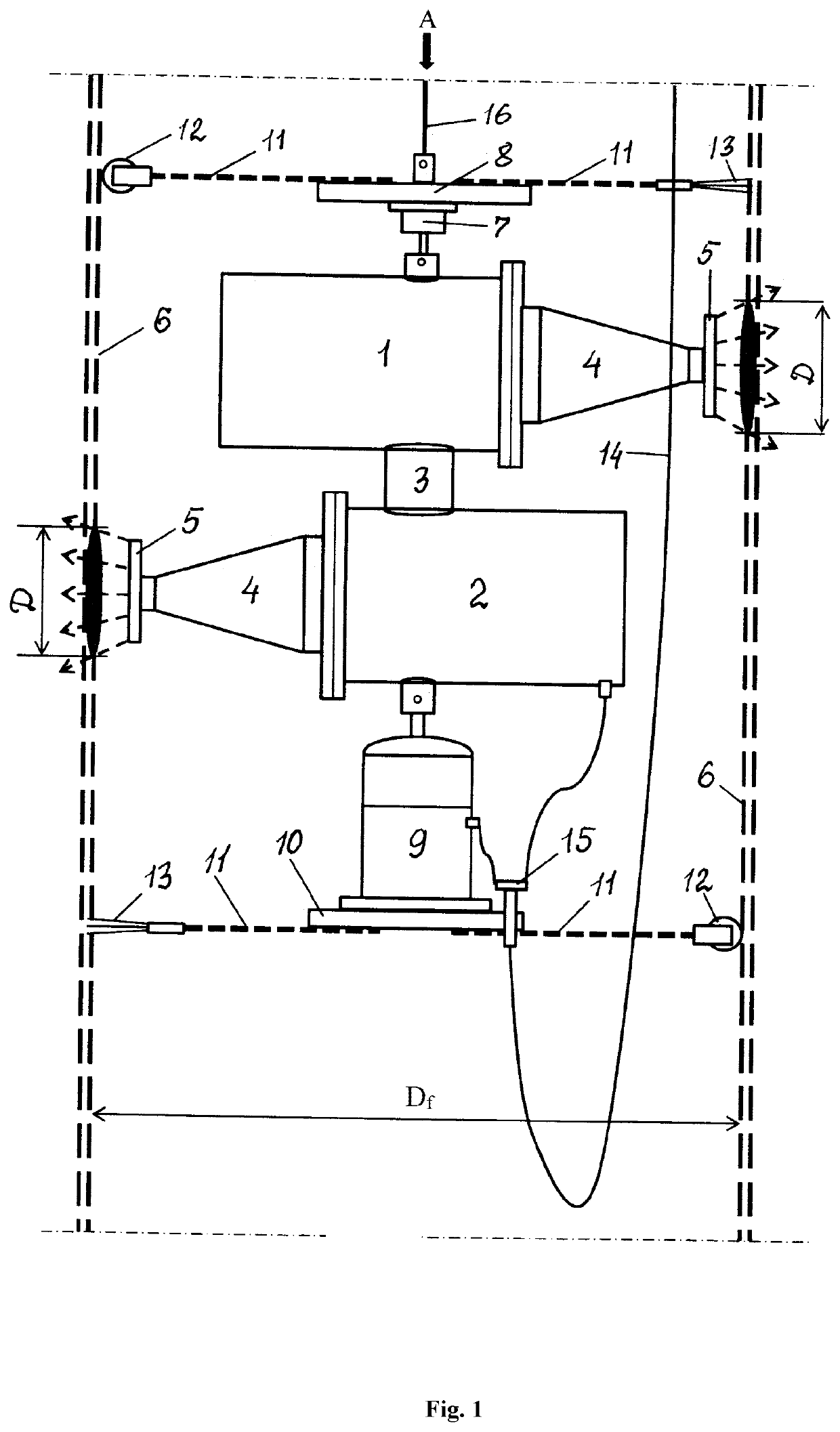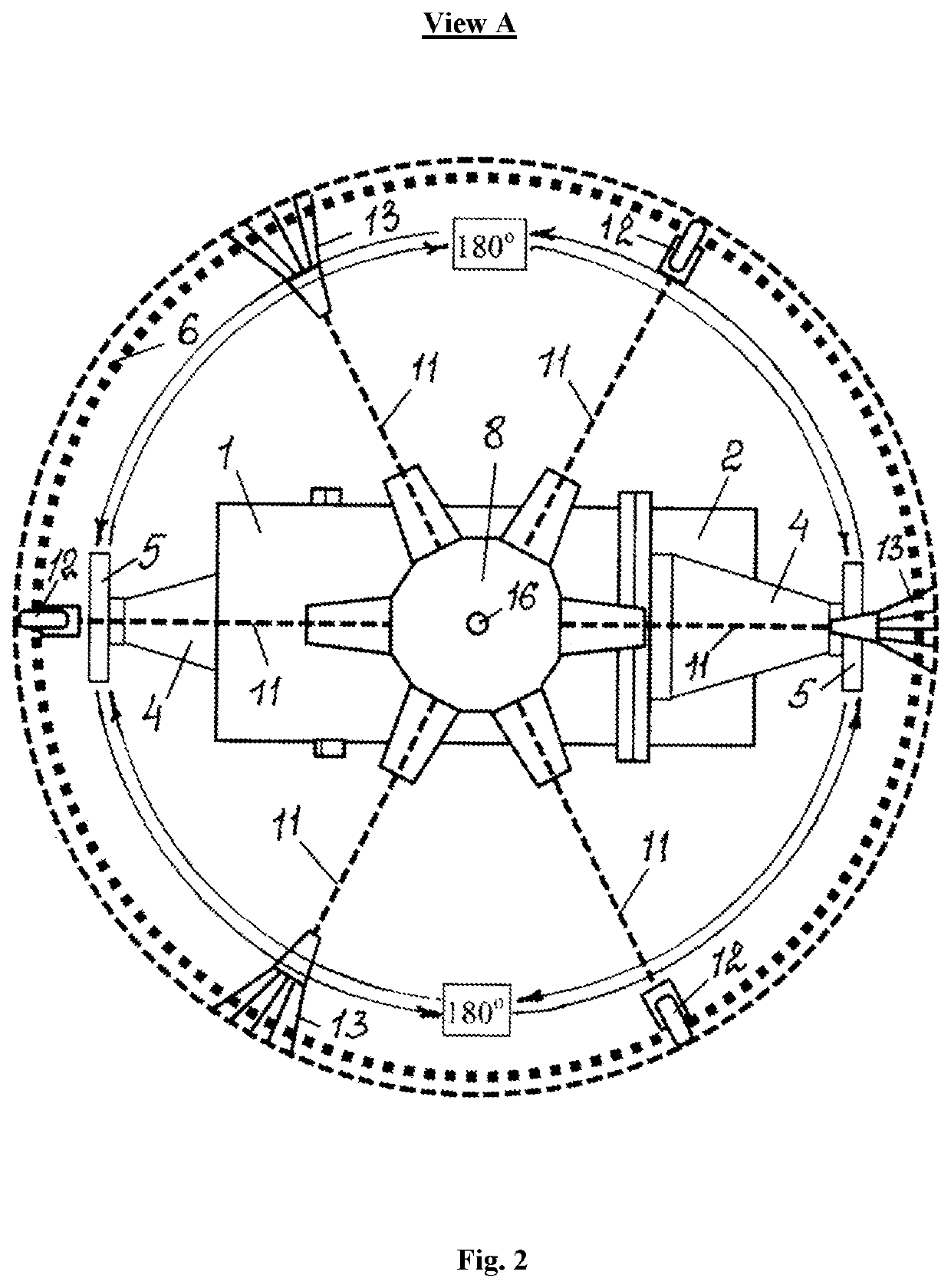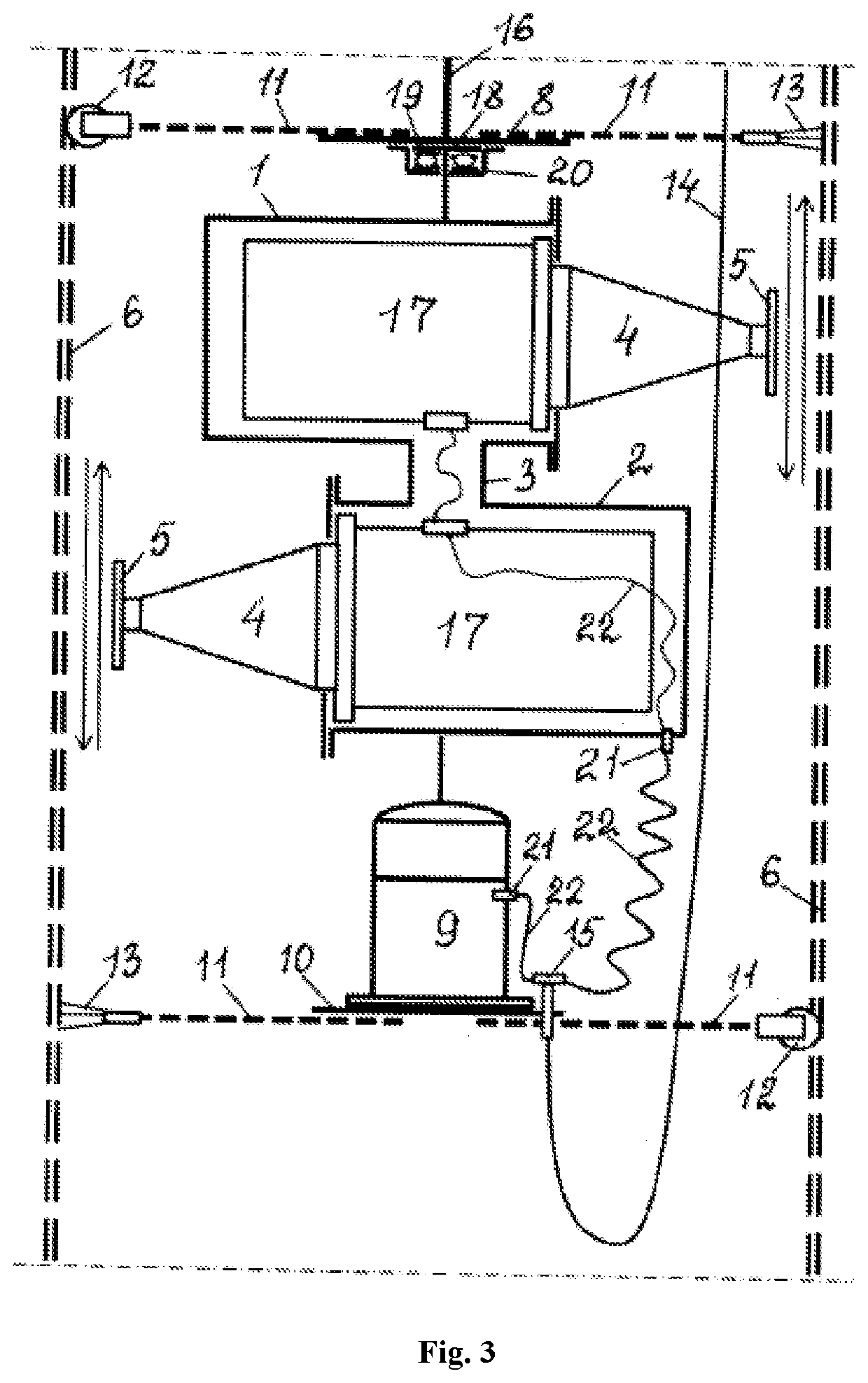Acoustic emitter device for regular cleaning of a downhole filter
- Summary
- Abstract
- Description
- Claims
- Application Information
AI Technical Summary
Benefits of technology
Problems solved by technology
Method used
Image
Examples
Embodiment Construction
[0018]In the embodiment of the invention, used as an example, high-capacity ultrasonic vibration systems with high amplitude of vibrations require the use of the large-diameter disk-type piezoelectric elements, which results in an increase in the overall dimensions of the vibration system as a whole. In order to be placed within an acoustic emitter, the ultrasonic transducer block (FIG. 1) is made of two cylindrical housings (upper (1) and lower (2)) interconnected by a pipe (3). The axes of symmetry of housings (1) and (2) are parallel and shifted along the filter axis. A single ultrasonic vibration system is installed within each of the housings (1) and (2). The concentrating plates (4) of the systems are oriented in the opposite directions to ensure that the working surfaces of waveguide tools (5) are located directly in front of the inner surface of filter (6). Housing (1) is attached to an upper supporting plate (8) via a rotary unit (7), while housing (2) is attached to a lowe...
PUM
 Login to View More
Login to View More Abstract
Description
Claims
Application Information
 Login to View More
Login to View More - R&D
- Intellectual Property
- Life Sciences
- Materials
- Tech Scout
- Unparalleled Data Quality
- Higher Quality Content
- 60% Fewer Hallucinations
Browse by: Latest US Patents, China's latest patents, Technical Efficacy Thesaurus, Application Domain, Technology Topic, Popular Technical Reports.
© 2025 PatSnap. All rights reserved.Legal|Privacy policy|Modern Slavery Act Transparency Statement|Sitemap|About US| Contact US: help@patsnap.com



